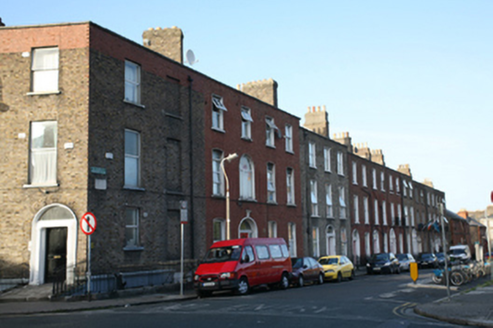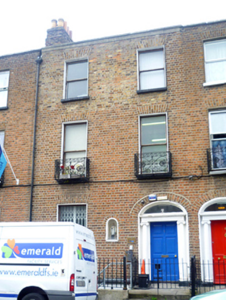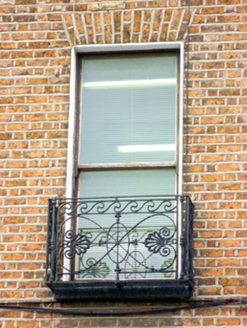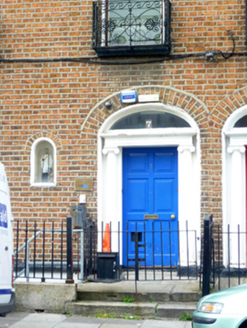Survey Data
Reg No
50010743
Rating
Regional
Categories of Special Interest
Architectural, Artistic, Social
Previous Name
Saint Francis Xavier's Boys Club
Original Use
House
Historical Use
Clubhouse
In Use As
Apartment/flat (converted)
Date
1825 - 1830
Coordinates
315902, 235680
Date Recorded
07/09/2011
Date Updated
--/--/--
Description
Terraced two-bay three-storey house over exposed basement, built c.1828. Now in multiple occupancy. Pitched slate roof hidden behind parapet wall with rendered course below granite coping and replacement rainwater goods breaking through parapet wall. Shared stepped brick chimneystack to north party wall with octagonal clay pots. Yellow brick walls laid in Flemish bond, rebuilt to second floor, on painted granite plinth course and rendered wall to basement. Diminutive rendered and glazed niche containing painted religious statue between ground floor openings. Gauged brick flat-arched window openings with patent rendered reveals, painted granite sills and one-over-one pane hardwood sliding sash windows, with six-over-six pane to basement. Ornate wrought-iron balconettes to first floor. Gauged brick three-centred arched door opening with moulded masonry surround and painted masonry Ionic doorcase, having replacement timber panelled door flanked by engaged Ionic columns on plinth bases supporting panelled lintel cornice and plain fanlight. Door opens onto granite paved platform, bridging basement area, enclosed by replacement iron railing and opening onto street via two granite steps. Basement area enclosed by iron railing on granite plinth wall accessed via steel steps.
Appraisal
Sharing the parapet height, fenestration pattern and fabric of its neighbouring buildings, this modest late Georgian townhouse makes a significant contribution to the streetscape. Forming part of a terrace lining the north side of Sherrard Street Upper, laid out by Thomas Sherrard, Clerk of the Wide Street Commissioners, in the 1820s, on land which originally constituted part of the Gardiner Estate, this building served as Saint Francis Xavier Boys Club in the mid twentieth century, and the niche reflects the religious associations of the building. The retention of a good doorcase and wrought-iron balconettes, of a similar design to those of the buildings on either side, adds decorative interest and increases the sense of continuity in this relatively intact terrace.







